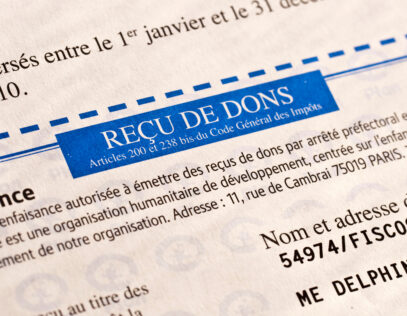Transfer pricing positions involving intangible property are heavily audited by tax authorities worldwide. For multinational companies, compliance in this area is crucial to avoid transfer pricing adjustments and penalties.
Intangible assets can be among the most valuable assets a company owns. For most multinationals, they are a major source of sustainable competitive advantage. Intangible ownership—be it trademarks, patents, secret formulas, or know-how—can impact the tax burden throughout the group.
Definition of Intangibles
For transfer pricing purposes, the OECD defines an intangible as an asset that is not physical or financial but is capable of being owned or controlled for use in commercial activities and whose use or transfer would be compensated between independent parties in comparable circumstances. Legal, contractual, and other forms of protection may affect the value of an intangible and the returns attributed to it, but the existence of such protection is not a necessary condition for being characterized as an intangible for transfer pricing purposes.
Intangible assets include patents, “know-how” and trade secrets, trademarks, trade names and brands, rights under contracts and government licenses, and license and similar limited rights in intangibles, according to the OECD. According to OECD guidelines, group synergies, market-specific advantages/conditions, and assembled workforce are not considered intangible assets for transfer pricing purposes.
Analysis of Intangibles – Context & Purpose
The OECD’s base erosion and profit shifting (BEPS) project identified 15 actions, three of which aim to ensure that transfer pricing outcomes are in line with value creation—the entities that create the most value for a group are entitled to larger shares of the profits. Action 8 focuses specifically on the treatment of intangibles, and Action 9 seeks to align economic returns with the source of value creation rather than the provider of risk and capital. The final guidance on these actions has now been incorporated into the updated OECD transfer pricing guidelines.
Broadly, the updated OECD guidelines cover three core areas regarding transfer pricing involving intangibles:
- Identifying intangibles for transfer pricing purposes
- Valuing and transferring ownership of intangibles
- The rights to intangibles’ returns
Profits surrounding intangibles can’t be attributed only to ownership. The OECD advises that intangible returns, which can often be quite significant, are allocated to the group entity that performs the important “development, enhancement, maintenance, protection, and exploitation” or (DEMPE) functions for the intangible. Taxpayers will also have to consider which entity manages and controls the risk associated with the performance of the DEMPE functions (i.e., operational risk); manages and controls the financing of the DEMPE functions; and which entity can bear the risks associated with financing (e.g., financial risk).
“Profits surrounding intangibles can’t be attributed only to ownership.”
How to Analyze Intangibles
- Step #1: Identify the intangibles used or transferred in a transaction. Also, identify the specific economically significant risks associated with the DEMPE functions of intangibles.
- Step #2: Identify the contractual arrangements involved. Determine an intangible’s legal owner based on the terms and conditions of legal arrangements. The legal owner can be determined by relevant registrations, license agreements, other relevant contracts, and other indications of legal ownership, as well as the contractual rights and obligations.
- Step #3: Identify the parties performing functions, contributing assets, and assuming risks related to the DEMPE functions of the intangibles. In particular, note which parties control any outsourced functions (like R&D) and control risks.
- Step #4: Determine if the conduct of the parties and the terms of the relevant legal arrangements are consistent. One must determine whether the party assuming risks in fact controls the risks and has the financial capacity to assume the risks.
- Step #5: Identify the controlled transactions related to the DEMPE functions of intangibles in light of the intangible’s legal ownership under relevant registrations and contracts. The conduct of the parties, including their relevant contributions of functions, assets, risks, and other factors contributing to the creation of value and the framework for analyzing and allocating risk, is important to note, as well.
- Step #6: Determine arm’s length prices. This should be consistent with each party’s contribution of functions performed, assets used, and risks assumed.
Questions to Consider When Analyzing Intangibles:
- Who is the legal owner of the intangibles post transfer?
- Is the legal owner also performing the important DEMPE functions, managing and controlling the operational and financial risks associated with those DEMPE functions, and does it have the financial capacity to bear those risks? If not, is there a commercial reason for this misalignment?
- Does the pricing approach appropriately reflect the contributions of all relevant parties?
Rights to Intangible Returns
Taxpayers need to make certain important intangibles within the group have been identified. Be sure to focus on legal registration, even for intangibles other than intellectual property. You also need to identify which entities own and exploit the group’s intangible assets and which ones develop, enhance, maintain, and protect the intangibles.
It’s critical that entities assuming risk with respect to DEMPE functions exercise control over risks and have the financial capacity to assume the risks to be entitled to the returns of the risk.
Entities providing funding and assuming the related financial risk but not managing or performing the DEMPE functions for intangibles would only be entitled to a risk-related return, not a residual return.
Entities that provide funding that do not manage or control the risk associated with funding decisions would only be entitled to a risk-free return.
Valuation and Transfer of Intangibles
There is no single, exclusive method for valuing intangibles. Valuation should be based on a functional analysis of business processes and how the transferred intangible interacts with other functions, assets, and risks that comprise the global business.
U.S. regulations and the OECD transfer pricing guidelines both recommend traditional transfer pricing methods to analyze intangibles: the comparable uncontrolled price (CUP) method/comparable uncontrolled transaction (CUT) method; the resale price method (RPM); the cost plus (CP) method; the transactional net margin method (TNMM)/comparable profit method (CPM); and the profit-split (PS) method.
The transfer pricing methods most likely to prove useful are the CUP and the transactional profit-split methods. Valuation techniques should be used with caution. However, one-sided methods, including RPM and TNMM/CPM, generally aren’t reliable methods.
Valuing intangibles can be complicated and traditional transfer pricing methods don’t always work. So, the OECD also allows using the following business valuation approaches.
- The Market Approach: This approach estimates value based on actual transactions conducted by third parties. It requires collecting market data from comparable transactions and analyzing the data to estimate the intangible’s value through comparison and correlation.
- When assessing comparability, it’s essential to evaluate the unique features of the intangibles. All facts and circumstances that materially contribute to the creation of value must be considered.
- The Income Approach: This approach considers income and expense data relating to the intangible. Value is determined based on cash flow projections and discount rates.
- The Cost Approach: This approach values intangible assets based on what it might cost to recreate a similar asset. The OECD transfer pricing guidelines discourage methods like this that seek to estimate the value of intangibles based on the cost of intangible development.
Challenges from the Arm’s Length Principle
Taxpayers face several challenges when applying the arm’s length principle to transactions involving intangibles. These include:
- Lack of comparability
- How to account for different intangibles owned/used by different related parties
- Difficulties isolating the impact of intangibles on the groups’ income
- Timing differences between efforts and returns
- Group arrangements, i.e., ownership, risk, where funding is separated from functions, control over risk, and decision making
- Different countries interpreting the rules differently
Transfer Pricing Controversy
Over the years, transfer pricing issues involving intangibles have been a source of significant controversy between taxpayers and the IRS. Disputes over transactions involving intangibles have cost multinational companies millions to billions of dollars, in addition to time, resources, and legal fees.
The following cases have huge implications for multinational companies engaging in transactions involving intangibles.
US vs. Coca-Cola: November 2020
Issue: Royalty and license payments: Coca-Cola based its intercompany pricing on a closing agreement with the IRS from 1996, where a formulaic method was applied. The IRS thought too much profit was distributed to foreign entities.
Outcome: This is the first big win for the IRS in years. Coca-Cola stands to pay $9 billion in back taxes.
The Takeaway for Multinationals: The IRS will be interested in seeing transfer pricing documentation for transactions involving intangibles. Taxpayers should expect heightened scrutiny, especially now that the IRS has the case law to prove it.
Meditronic vs Commissioner: August 2018
Issue: Royalty license and transfer pricing methods. Meditronic used the comparable uncontrolled transaction method to allocate profits—too many profits, according to the IRS—to an entity in Puerto Rico. The IRS used the comparable profits method to allocate profits and determined the taxpayer owed $1.4 billion in back taxes.
Outcome: The Tax Court rejected the IRS’s position and made some adjustments to the taxpayer’s use of the CUT method. But the IRS appealed and the case is back in Tax Court for further factual development.
The Takeaway for Multinationals: Regardless of the outcome, the case enforces the importance of transfer pricing compliance, specifically choosing and supporting the best transfer pricing method for a transaction.
Amazon vs U.S.: August 2019
Issue: Patent cooperation treaty (PCT) calculation. IRS proposed $2.2 billion in adjustments claiming Amazon’s cost-sharing arrangement’s contribution payments for the transfer of existing IP rights were flawed. The IRS wanted to incorporate intangible assets like workforce, goodwill, and customer relationships in the calculation. Amazon went by the definition of intangibles in the tax code.
Outcome: The U.S. Tax Court determined that Amazon’s interpretation of the tax code was right at the time of the arrangement.
The Takeaway for Multinationals: The Tax Cuts and Jobs Act TCJA amended the definition of intangible assets to include previously unlisted items like workforce in place and goodwill. The law also presented the IRS’s preferred methods for valuing IP in intercompany transfers. So, with a new definition and preferred methods regarding intangible assets, what types of transactions do you think the IRS will be focused on in the future?








